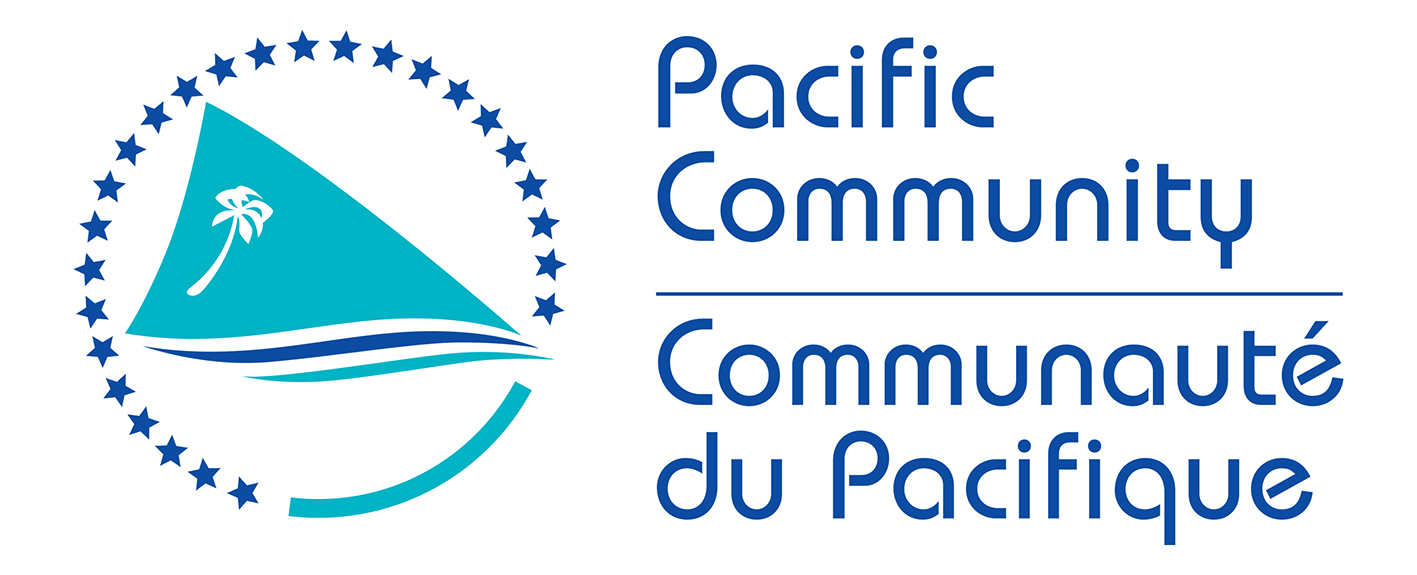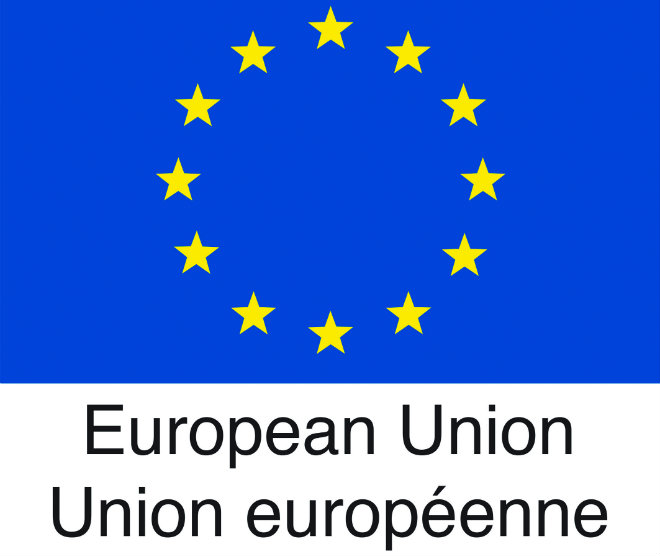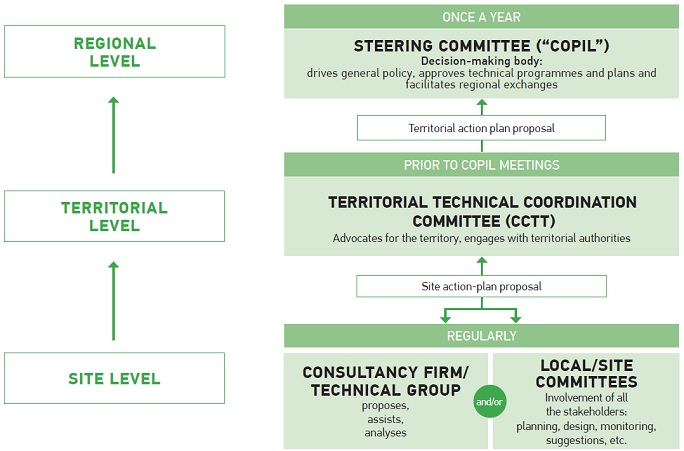The SPC as project manager :
The Pacific Community used all its services and tools to ensure that the project was well managed in accordance with international standards. It also ensured coordination and exchange between the INTEGRE project and all the actions carried out by its own technical sections concerned, as it facilitated cooperation and exchange with the services and programmes of other organizations of the Council of Regional Organizations in the Pacific ("CROP"). The INTEGRE project was attached to the "Climate Change and Environmental Sustainability Program" Division of the SPC.
The technical coordination team for the implementation :

The technical coordination team was recruited by SPC. It assisted the project owner in implementing the project, in particular by carrying out tasks requiring technical capacity and administrative, preparatory and ancillary tasks (secretarial, communication, etc.) relating to the planning and monitoring of certain aspects of the project and the submission of the corresponding reports.
The team consisted of five people :
- a coordinator in charge of the general technical coordination of the project, implementation and follow-up, ex-ante evaluation (action plan) and implementation and follow-up of the actions carried out in Pitcairn, she reported to the SPC Director of the "Climate Change and Environmental Sustainability Program" Division ;
- a project assistant who supported the whole team in administrative, financial, logistical and communication/evaluation aspects ;
- three territorial coordinators responsible for project implementation and monitoring at country and territory level. Their role was not a substitute, but on the contrary led to a transfer of know-how through practice.
Referring technical services :
One per country or territory :
The accountability of these services for the implementation of the project made it possible to anchor it in the governance structures and thus facilitate the transfer and ensure the sustainability of the gains.
For French Polynesia and Wallis and Futuna, this was the structure within which the territorial coordinator was based, namely the Environment Directorate (DIREN) and the Territorial Environment Service (STE) respectively.
For Pitcairn, it was the Natural Resources Division. For New Caledonia, it was the Conservatoire des Espaces Naturels (CEN).
Site coordinators / animators :

At the pilot site level :
One or more site coordinators could be identified for each pilot site, as needed. These were people (designated by their home departments) or services, on site or with excellent knowledge, with the competence to suggest decisions and act as a link between all the departments involved. They were involved in the project as part of their regular duties within their department.
Technical support structures :
Not endowed with decision-making powers, they could be set up in order to ensure the work of information collection and their shaping, analysis, impetus, preparation of working documents to be submitted to committees... They met as often as necessary, were led by the territorial coordinator and grouped resource persons according to their skills, knowledge and positioning in the partner structures of the project (services, communities, associations, consular chambers...).
A technical office was set up in Wallis and Futuna, as well as a technical support group in French Polynesia. More informal, Pitcairn's technical support unit included the coordinator, the Pitcairn Islands office in Auckland and the natural resources division in Pitcairn.







